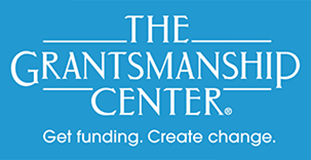Hardly anybody remembers John Venn, a British mathematician from the late 1800s. But everybody has heard of Venn diagrams, maybe used them in charts to explain how one group of characteristics “overlaps” another, and to name and define the stuff in the place where the groups overlap. Circle A represents tall people, circle B represents athletes. When we overlap the circles we’ve got tall people who aren’t athletes, and athletes who aren’t tall—but in the overlap, we’ve got tall athletes.
Blog
Proposal Writing Skills: Transferable?
Let’s say you’re an experienced development staffer, or a consultant, and you’ve been submitting grant proposals to support the organization’s mission. Let’s also say you’ve gotten good at it and have helped your organization win funding. But you’ve lately gotten very interested in a different field (arts, environment, housing, e.g.) and you think maybe you can take your skills to a nonprofit in that new field that will be glad to have you. Can you? Will they?
What to Do with Leftovers
It’s not common, but sometimes a nonprofit comes to the end of a program grant with some money that is unspent. This might happen if the program didn’t start on time, or the nonprofit has raised money from other sources (e.g. individual contributions) and uses that money for part of the program, or things didn’t cost as much as you thought they would—unlikely but sure, it could happen.
Handling Rejection
You’ve done your research and submitted a very well-written, well-documented proposal for a grant. You’ve prepared a reasonable budget, attached all the required forms, asked for the right amount of money and submitted well before the deadline. In short, you’ve done exactly and fully what is necessary to win the grant. But you don’t.
Build the Right Box, Then Fill It
How much impact should you promise in your proposal? Let’s say you’re addressing homelessness, or addiction, or any one of a number of stubborn social problems. You’re a $4 million-a-year agency in a major city. Should you be claiming to “solve the problem” with a few large grants? Probably not.
Budget Narratives
It’s that part of the proposal we almost always tend to shrug off. “Oh, yeah, we have to write up something to explain the budget, we’ll get to that after we do the important stuff.” Evidence suggests it might be worth much more than a shrug.
Is “Mission Creep” a Bad Thing?
Nonprofits are created and chartered to pursue a specific mission. It’s how an organization earns its tax-exempt status and it’s the salient purpose that brings people together to do important work. When a nonprofit decides to edge out from the core of its mission and attempt new projects, it’s sometimes thought of negatively, as “mission creep.”
Nonprofits & Lobbying: The Rules
Does your organization want to engage with public policy, influence a decision on an important bill, add your voice to a debate? Thousands of human and social services nonprofits have something to say. What are you allowed to do without violating the IRS codes?
Storytelling Tips
There’s evidence to suggest that telling a story is an effective way to engage funders. Turning dry statistics into lively, compelling narratives about real people in real situations is a good way to make a proposal spark a response. Are there ways to tell a story besides “once upon a time?”
Many Types of Proposals
The proposal is an appropriate way to submit a request for funding, but it’s important to make the right kind of request—matching the format of the proposal to the ‘kind’ of funding you’re after. Some charitable dollars are “fungible” – money given by an individual donor, e.g., and can be used for many different purposes within the organization. But foundation grants are intended for specific purposes and proposals need to match the donor’s intentions.












